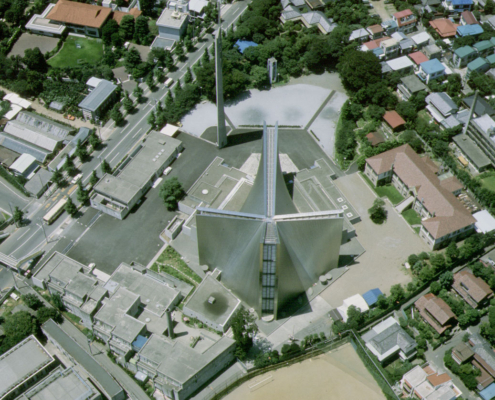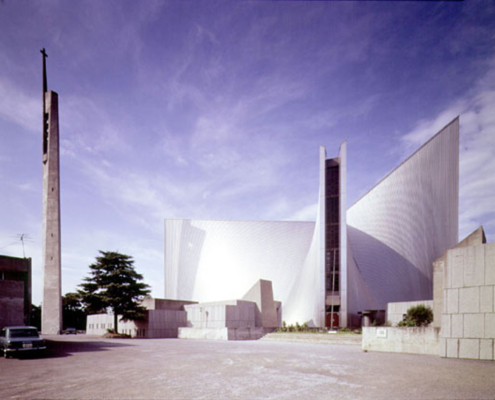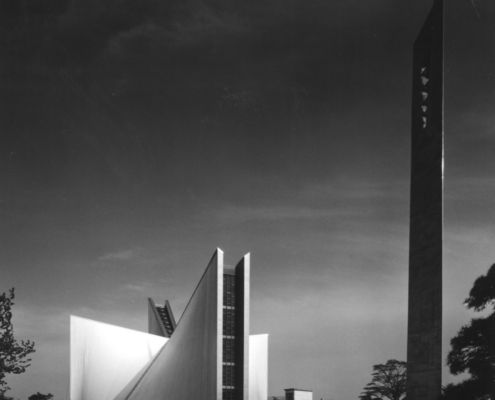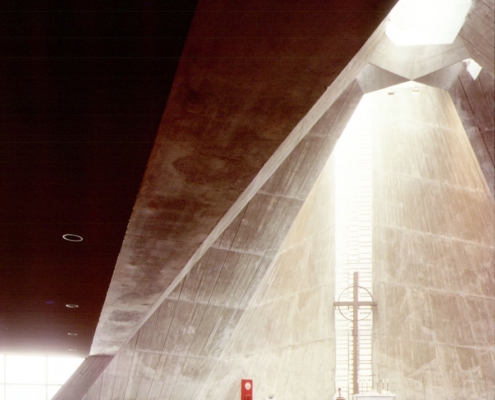"
There are some buildings that do not belong to any time or age. The Saint Mary Cathedral of Tokyo by Kenzo Tange is definitely one of these. Of course materials and technologies make it recognizable as a project of the 20th century, but we could easily say that this project has been built yesterday the same as 50 years ago. It’s not usual, in terms of the quality of architecture. And it is not the only quality of this project.
The Tokyo Cathedral has been completed in 1964, replacing the old wooden cathedral, in gothic style, burnt during wartime. Tange conceived the new church as a concrete structure, simple in concept and complex in shape, which recalls the lightness of a bird and its wings.
The eight walls – the elements which hold the whole structure – are at the same time roof and walls, enclosing the space and opening to the outside through vertical gaps. The walls are curved hyperbolically to express the tension to the sky, and turning the rhomboidal ground floor into a cross at the roof top. The different heights of the wings, asymmetrical, make it a dynamic shape on the sky background. The highest wing is 39,41 m high.
The reflection of the sunlight on the stainless steel external cladding looks as a shining dress on the hard concrete slabs. Although it is a monochromatic cladding, the curves and the U-shaped profiles enhance the dynamicity of the structure. It all makes the church an iconic building in the dense urban context of Tokyo.
At the basement level the stone blocks play in contrast with the metal wings, hanging to the ground the movement of the walls. The side entrance zone has a lower ceiling area which introduces the main hall.
The effect of the light on the curved walls, changing at every hour, makes the interior atmosphere extremely involving: direct sunlight and diffused reflections accompany the bending surfaces, and the visitor can immediately see and understand the curving of the concrete walls.
The light passes through the glazed gaps, four vertical in between the walls, and four as roof light – the cross at the top. It is a rather dark space, but the contrast dark/enlightened enhance the symbolism of the church as a religious space.
The bell tower follows the guidelines of the composition: its four vertical lines are in fact flowing into one, stretching up to the sky. The organ, especially designed to adapt to the space of the entrance, was made in Italy by Mascioni and installed in 2004.
The Tokyo Cathedral is considered one of the most important of Tange’s work, and one of the most interesting architectures in Tokyo. The building puts together an occidental subject and the oriental culture and sensibility, resolving the complexity of the project in a brilliant architecture.
"
Information provided in part by: Tange Associates







